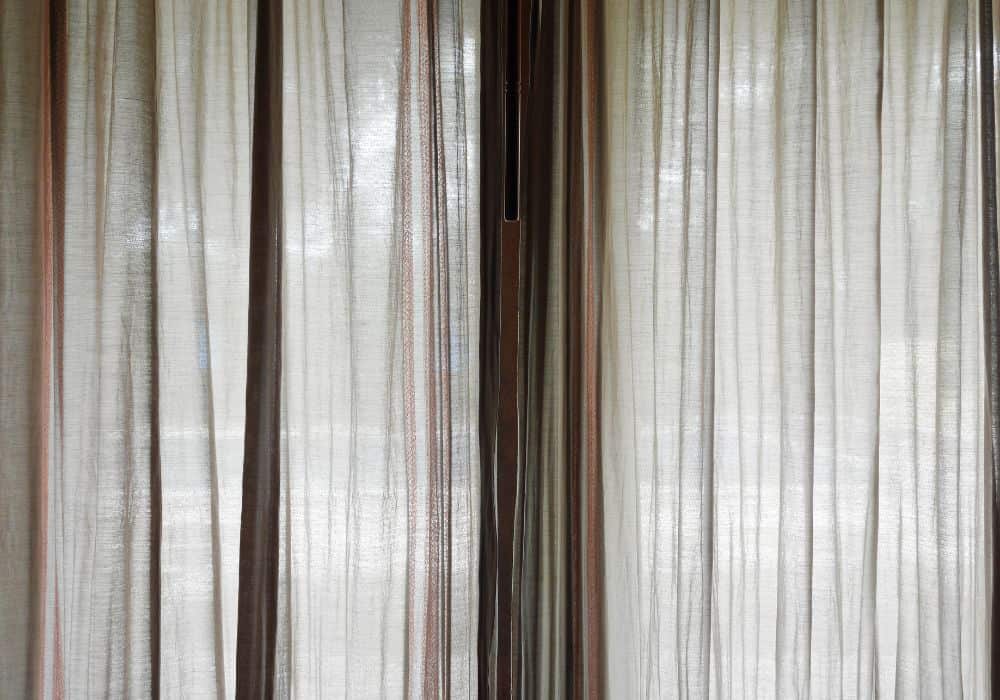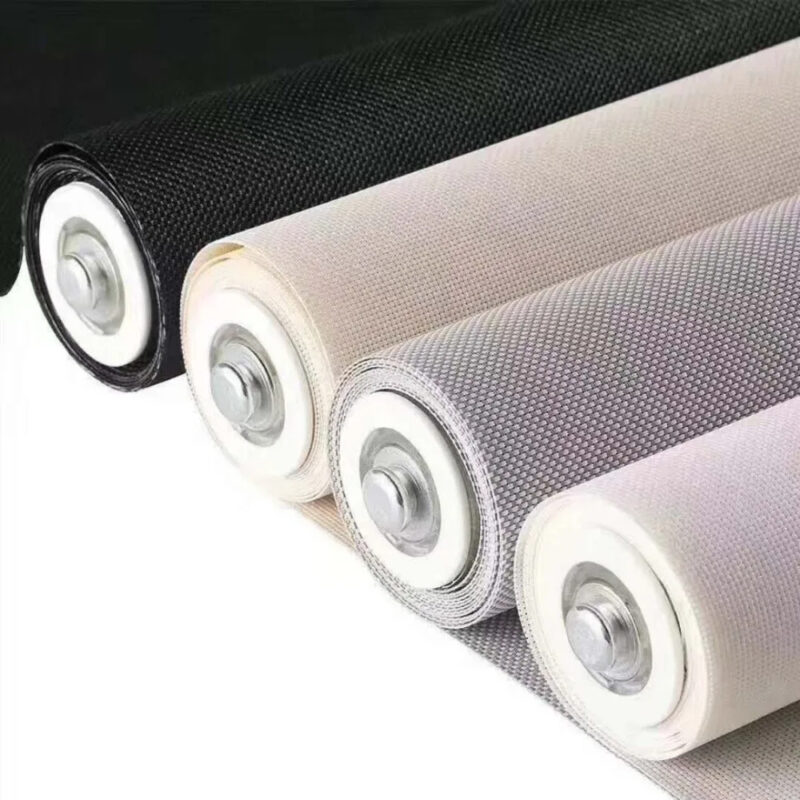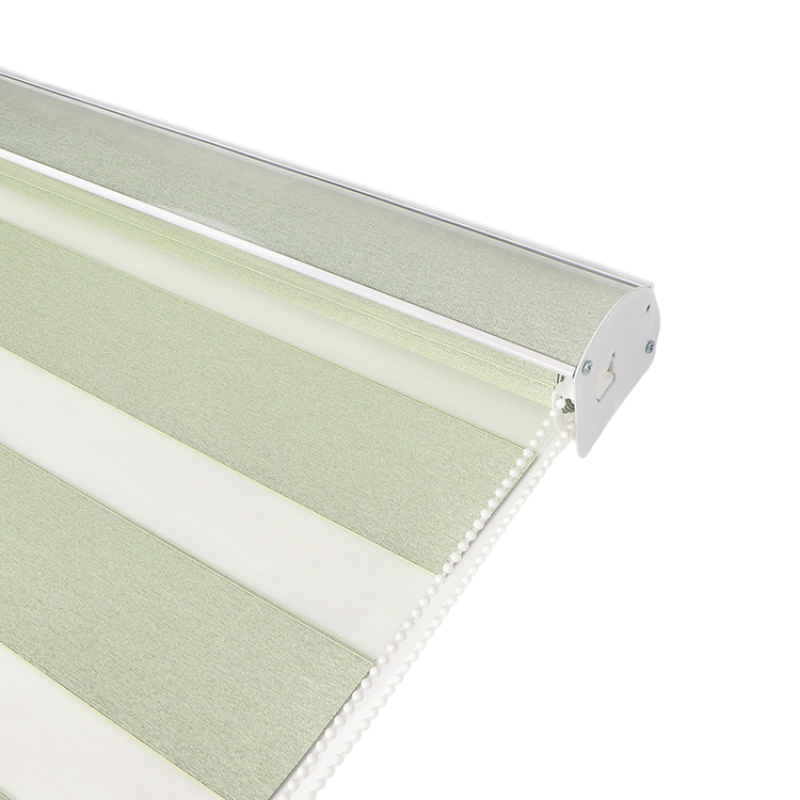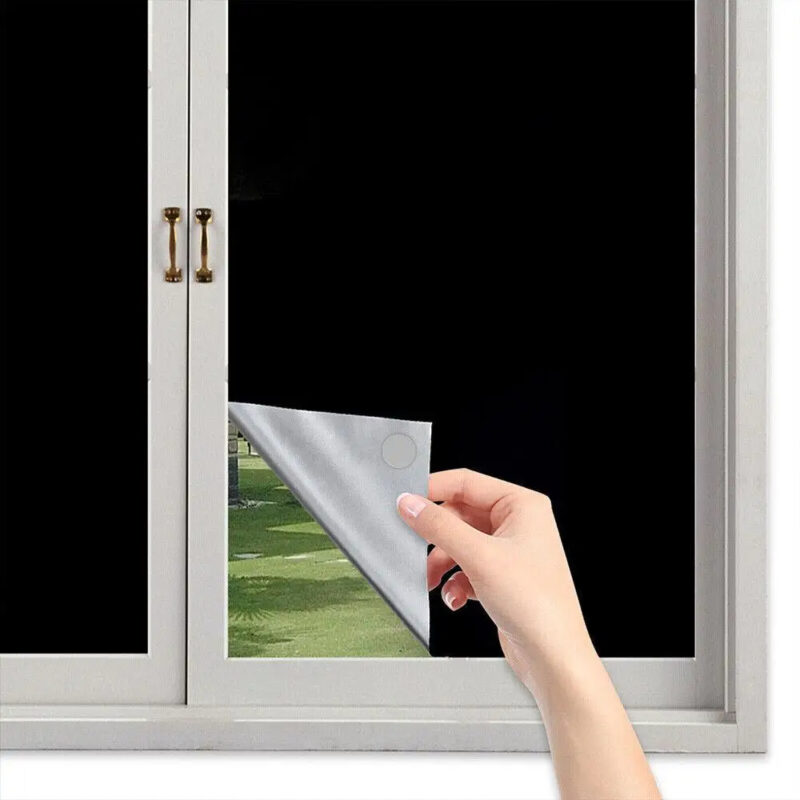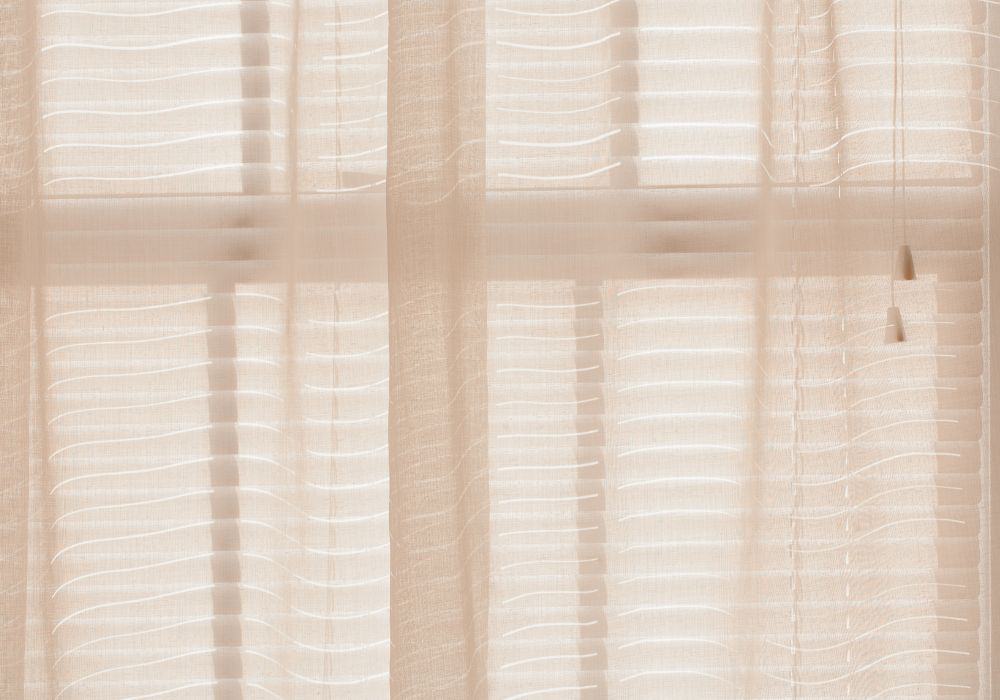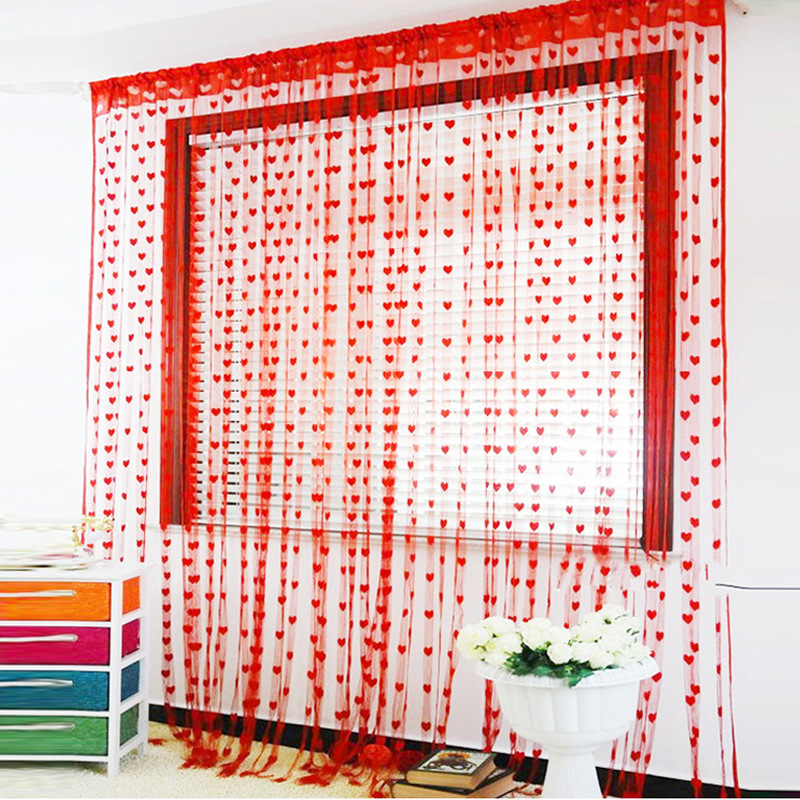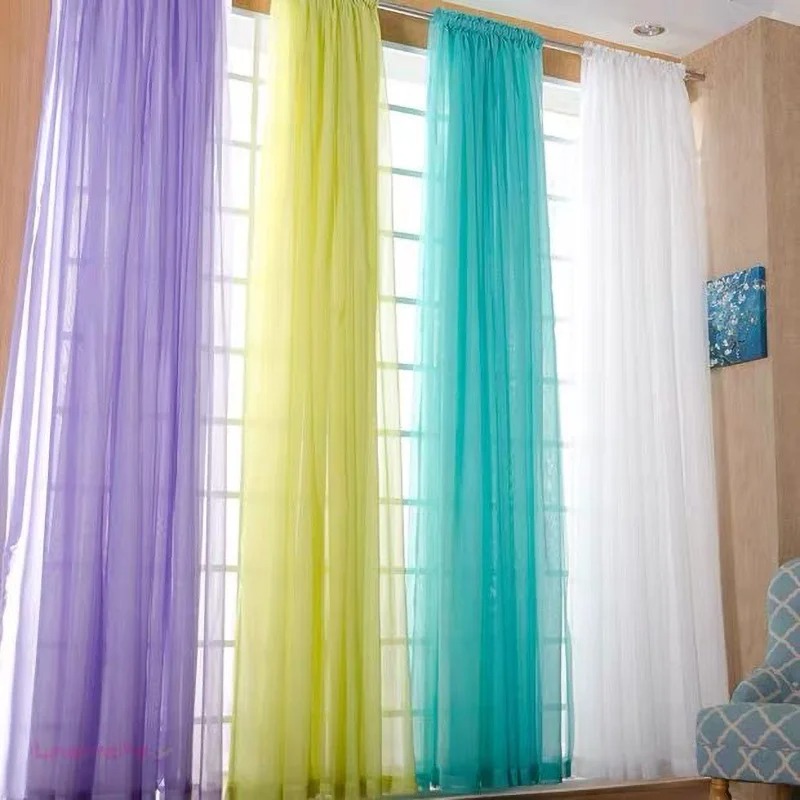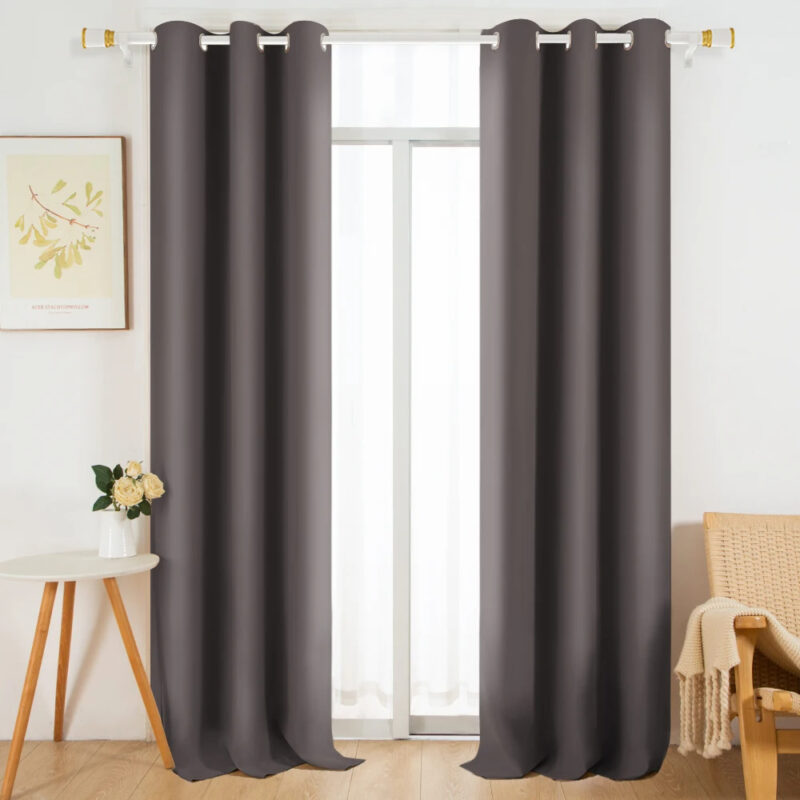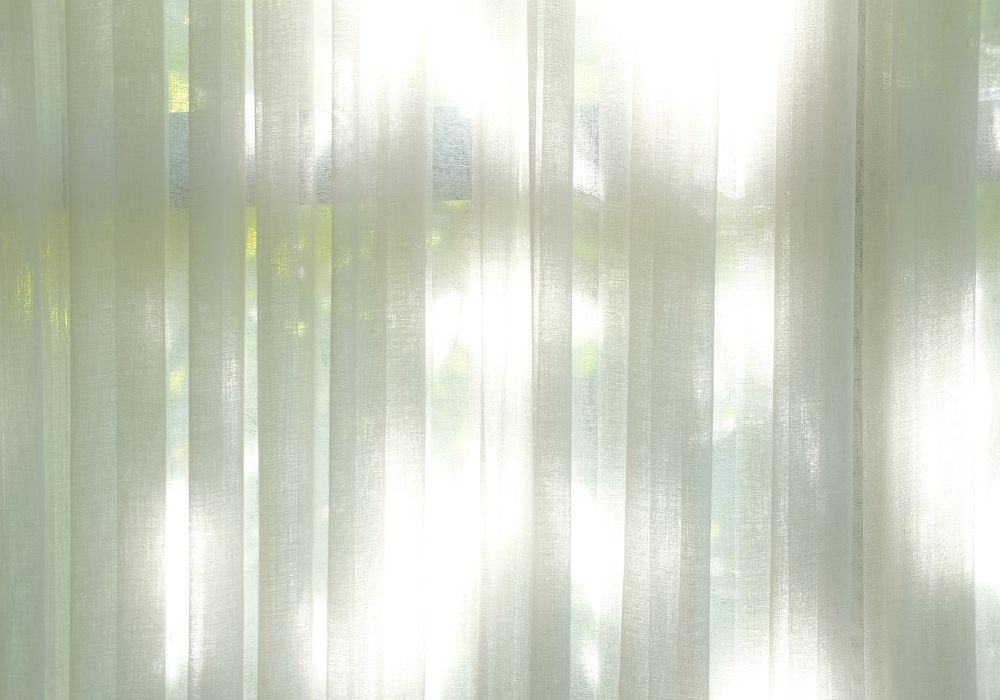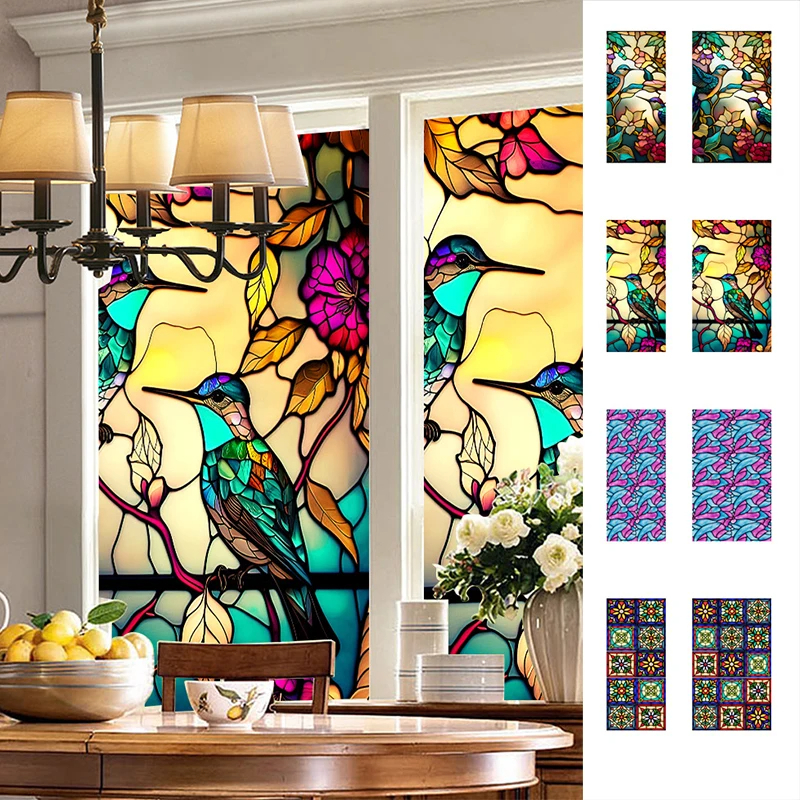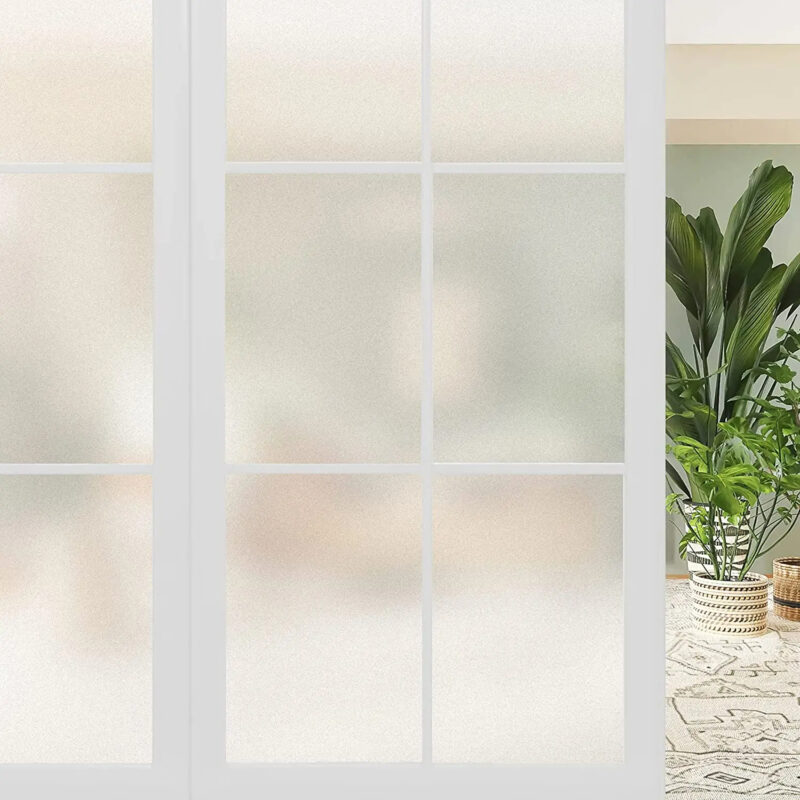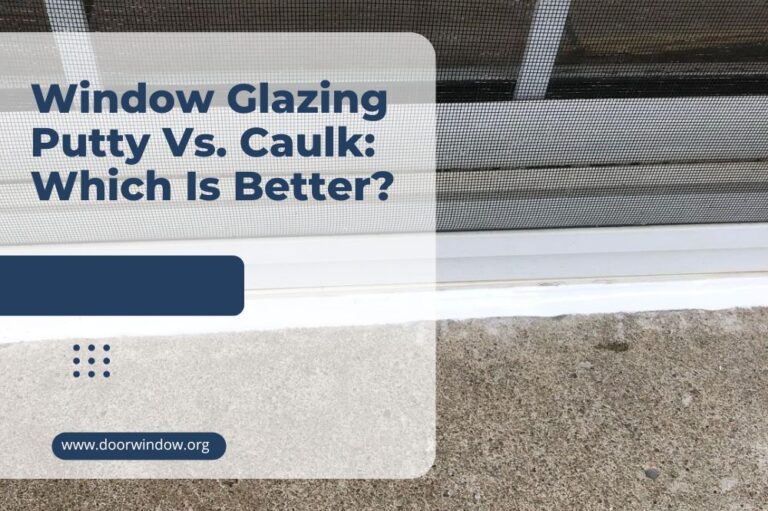Sheer vs Semi Sheer Curtains: Which is Better?
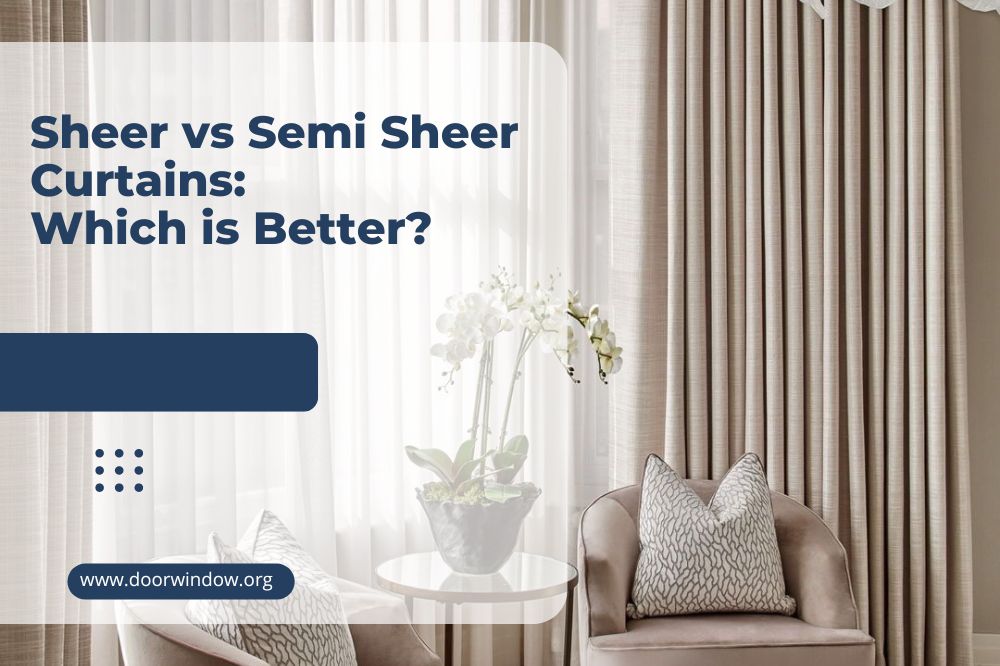
Whether behind blinds, layered with other materials, or simply hanging on their own, sheer has quickly become one of the most popular curtain materials for interiors worldwide.
And it’s easy to see why. It’s an elegant and delicate-looking fabric that can allow maximum light during the day. Moreover, it’s one of the cheapest materials on the market, making it a versatile choice for most budgets.
This article will explore everything you need to know about sheer and semi-sheer curtains. We will compare and contrast these two popular types of curtains against several criteria, offering our expert advice on which is best for your needs.
Firstly, what are sheer curtains?
Sheers are an incredibly lightweight fabric commonly used across clothing, upholstery, and curtains. It is made using fragile thread and, as such, looks transparent. Sheer often looks ‘flimsy’ and delicate to the touch.
There are a variety of different fabrics that can be sheered, including lace, silk, lace, nylon, and rayon. Although commonly made in white, sheer curtains can take on various dyes, styles, and patterns and feature embroidery and delicate finishings.
Sheer can be used as a stand-alone curtain or layered on other fabrics for different styles and combinations. They are commonly paired with blackout curtains to add a softer look to your room during the daytime.
What are semi-sheer curtains?
Semi-sheer is fast becoming another popular material choice for curtains. They have a denser weave during production, making them heavier and sturdier than pure sheer. Despite this, semi-sheer is still a much more delicate material than several other curtain fabrics.
Furthermore, semi-sheer is less transparent than pure sheer and, as such, can be used in various places to offer more privacy and security. It must be said, however, that semi-sheer is still incredibly fine when compared to traditional fabrics like cotton, linen, and silk.
Because of the denser weave, there are a wider variety of materials you can choose from with semi-sheer. Fabrics that can be semi-sheered include polyester, faux silk, and plastics.
Sheer Vs. Semi-Sheer:
We will now compare and contrast sheers and semi-sheers across various categories and criteria. We aim to help you make an informed decision about which material is best for your needs.
1. Privacy – Winner: Semi-sheer
Whether in your living room, bedroom or hallway, curtains are often hung up to offer privacy from the outside world. As such, how well a curtain can block the view from outside can be crucial, especially when your interior lights shine brightly at night.
Because of their finer material, sheer curtains are incredibly see-through. This means they offer very little discretion or complete privacy, as they can reflect shadows quickly, as well as the outlines of furniture or people standing beside lights. People will be able to see what’s happening behind them. As such, they are not ideal curtains to use in rooms where privacy is to be expected.
Because of their denser, semi-opaque texture, semi-sheer curtains are a little bit better at blocking the view from outside than pure sheer curtains, especially if set in a dark color. That said, many people still must layer these curtains with other fabrics because semi-sheer can still be see-through.
2. Energy-efficiency – Winner: Semi-sheer
As well as being decorative, curtains have another valuable purpose for homeowners – energy bills. And while both sheer and semi-sheer are incredibly lightweight, semi-sheer pulls ahead to save you a small amount of money.
One of the principal benefits of sheer is its lightweight makeup, allowing a breeze to enter the room and cool the area down. They offer minimal UV protection against sun rays, though mixing them with various fabrics can help improve this.
On the flip side, these curtains can also act as insulators when closed during colder temperatures. Because they’re often pinned with other liners, these layers can act as inexpensive insulation along window blinds and doorways. Don’t expect massive savings with these curtains, but hey, every little can help!
3. Maintenance – Tied
Curtains can be expensive, irrespective of their design, material, or length. As such, you’ll want to invest in long-lasting, easy-to-maintain curtains as a good investment.
The good news is that both sheer and semi-sheer fabrics are easy to care for. Both use high-quality finishings to give you lifelong curtains. Vacuum your sheer and semi-sheer curtains on a low-power setting and hand-wash them in a bucket with warm water and a soaking agent. Rinse the curtains clean, and hang them upright to dry, ensuring no overlap or creases are forming.
Particular semi-sheer curtains can be machine-washed depending on the materials used in production, but you must check the manufacturer’s label for clear guidelines. In our view, hand-washing them ensures that all the delicate details and fine threads remain intact.
4. Amount of light – Winner: Sheer
One of the main draws for using sheer and semi-sheer is gently allowing natural sunlight to beam through your windows. Semi-sheer often has a mixture of fabrics that can act as a shield against sunlight. But because of its more simplistic, transparent nature, sheer is the best option for homeowners looking for a lightweight, easy-breezy curtain material.
The color of your sheer curtains can significantly affect the level of light that passes through. Generally, bright, light-colored curtains allow for better light-filtering than darker shades.
However, one thing to consider is the lack of light control both types of curtain offer. As we’ve said previously, sheer isn’t well equipped to prevent sunlight, and often a blackout liner is pinned underneath the curtain to regulate natural light and block UV rays that sheer fails to stop.
5. Décor, texture & pattern – Tied
While this category ultimately depends on personal preference, both sheer and semi-sheer curtains are incredibly versatile design choices. Both can easily be paired with simple or busy patterns to soften any room, and both boast various colors, sizes, and geometric patterns that will suit virtually every home.
Despite their transparent appearance, many sheer curtains promise high-quality embroidery and a polished look to any window they’re hung across. So no matter what vision you’re aiming for your window frame, you should be confident that both sheer and semi-sheer can fill the bill.
6. Measurement – Tied
Measuring is one of the essential things you need to do to buy and install the curtains yourself. Different fabrics have different methods and considerations when ordering length and width.
You’ll be glad to know that both sheer and semi-sheer are relatively easy to measure, cut, and prepare for hanging. To work out basic measurements, you must only consider how the sheer and semi-sheer are styled.
- For gathered top curtains, measure from the top of the rod and add about 18 inches for the total length.
- For pleated curtains, measure from the pin carrier and add 24 inches for the total length.
7. Cost – It depends
Cost can be a deciding factor for many homeowners on the kind of fabric they purchase. Considering many people layer sheer with other materials, you might also have to factor this into the cost.
Generally speaking, sheer and semi-sheer materials are some of the cheapest fabrics to buy curtains in, allowing you to buy more significant amounts of layers to your liking. They are especially versus high-end fabrics like silk and linen.
Ultimately though, the price you pay will depend on the following factors:
- If there are multiple colors used
- If the fabric has more than one pattern used
- If there are any embroidery
- If you have the sheer custom cut or sewed
- If there are many layers (in the case of semi-sheer)
Conclusion
Sheer has become one of the world’s most popular and versatile materials. From fashion and upholstery, its lightweight, elegant design makes it a real winner.
As window treatments, they allow lots of light to shine through windows and look fancy and sophisticated. That said, there are some considerations to be had when using sheer.
One of the critical differences between sheer and semi-sheer curtains is the level of privacy they can offer, with semi-sheer adding a small amount more discretion. This only becomes a deal-breaker if the curtains are used in bedrooms or as part of a bathroom window.
Ultimately, both types of material make great choices in curtains, clothing, and upholstery, and the selection of materials should only influence you in your local fabric store.
If you’d like to know more about the differences between sheer and semi-sheer curtains, please leave a comment below. But remember:
- The primary purpose of sheer and semi-sheer is to allow maximum light inside.
- Neither offer any privacy nor adequately block light to any great degree.
- Though semi-sheer pulls ahead in many different areas, your decision should come down to cost and the availability of your desired length and width.

